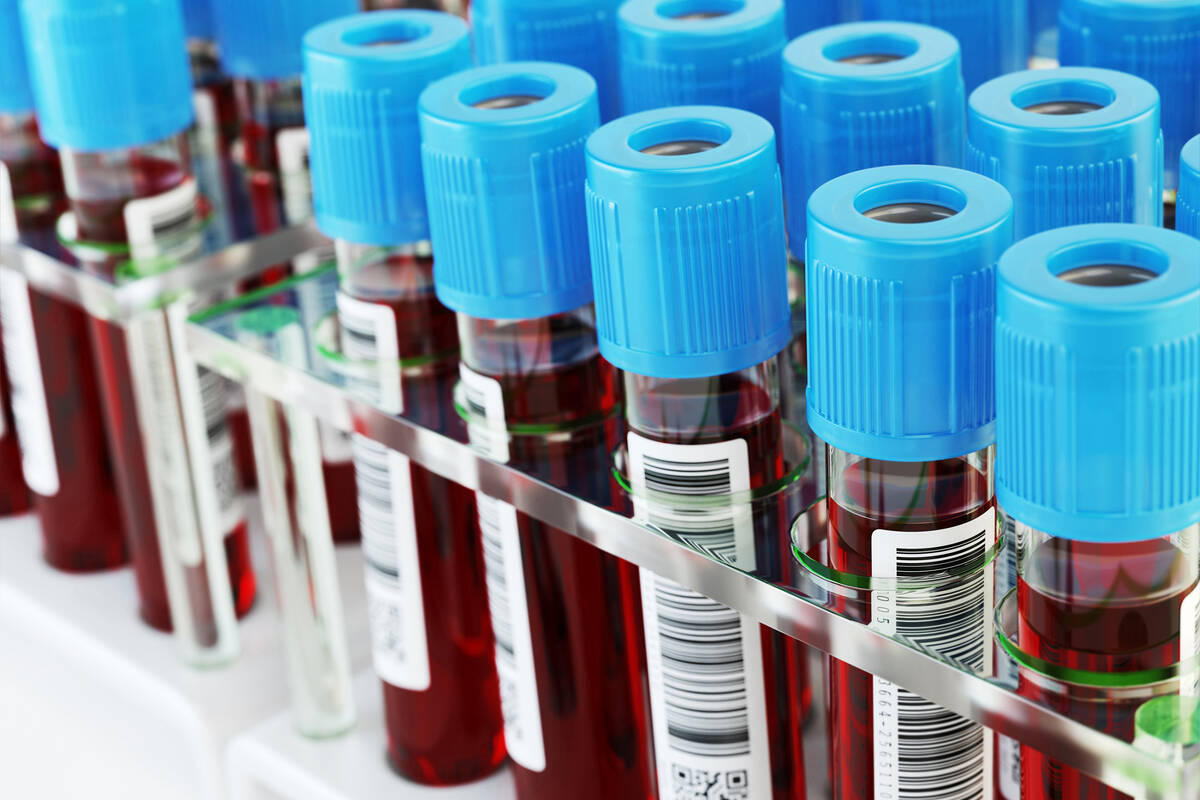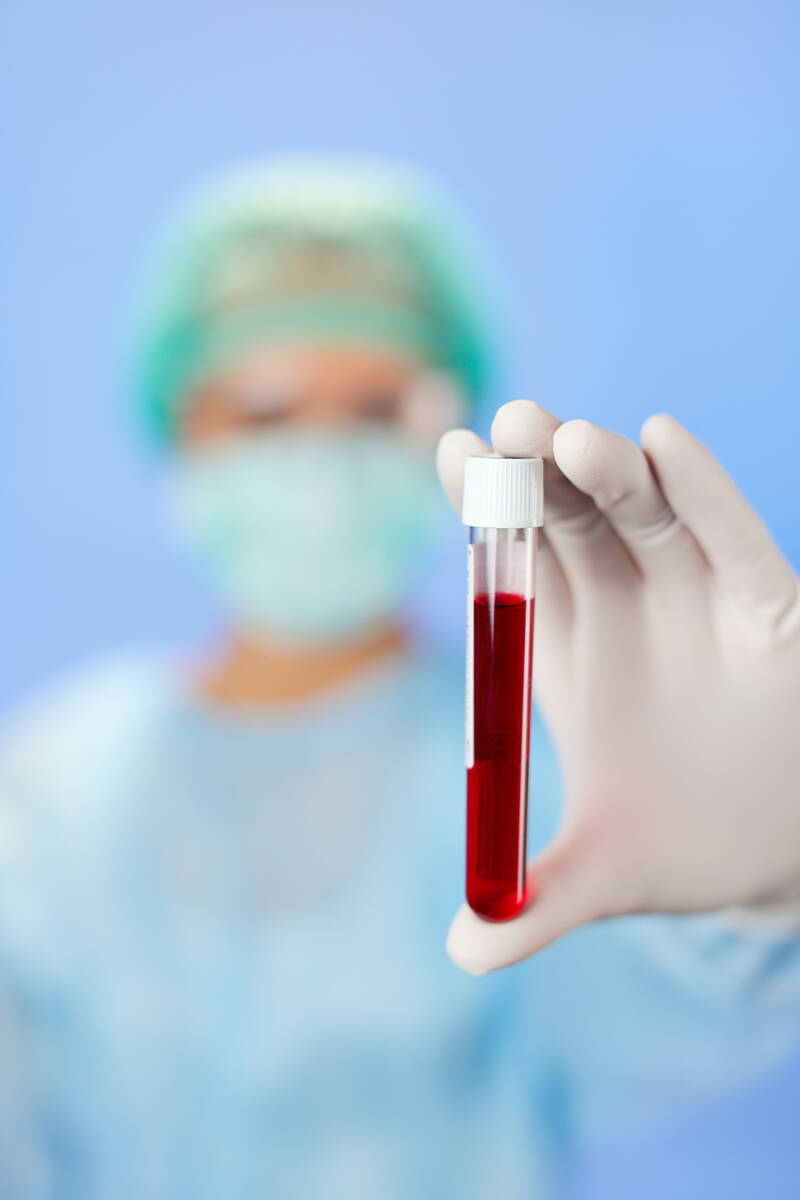Can an annual blood test find cancer while it’s curable?
Despite decades of effort in the war against cancer, screening tests are available for only five types of the disease, representing less than one-third of all cases.
What if one test could screen for dozens of cancers, using a single vial of blood?
Innovations in genetics and computing, which allow the detection of tiny fragments of genetic material shed by cancer cells with a “liquid biopsy,” or blood draw, are opening a new front in the battle.
“Cutting-edge techniques serve as a window to detect cancer early, and get an idea of where the cancer is coming from,” said Dr. Ash Alizadeh, who leads the Cancer Genomics Program at Stanford Cancer Institute.
While the test has promise, there also is peril. For instance, there is not yet evidence that discovering bad news early will actually extend lives, according to Alizadeh and other experts at the recent Precision Medicine World Conference in Santa Clara, California. And the test could do harm, they add, if people are treated for cancers that would never have otherwise bothered them.
One company is already marketing its blood test, and other tests are in the pipeline. As part of President Joe Biden’s Cancer Moonshot, the National Cancer Institute plans to assess the value of such tests. It will conduct a $75 million, four-year study of 24,000 people. Based on those results, it may expand the trial to 225,000 volunteers.
Liquid biopsies
Currently, there are no screening tests for lethal cancers of the pancreas, ovaries, stomach and other organs. Screening tests are only available for breast, cervical, colorectal and lung cancers, with prostate screening recommended on an individualized basis. A different test is needed for each type of cancer.
Current forms of cancer screening look for abnormal cells or lumps of solid tissue. For instance, breast and lung cancers are detected using X-rays. Cervical cancer is found by sampling cells. Screening for colon cancer uses a colonoscopy or stool test to look for polyps. When testing for prostate cancer, doctors look for lumps or elevated protein levels.
The vision behind liquid biopsies, a field called multi-cancer early detection, is to simultaneously screen for many cancers at earlier stages when there is a better chance for successful treatment — and integrate this test into routine medical care.
The concept is based on a discovery scientists made in the 1940s: When cells get old and die, they shed their genetic material into the bloodstream. Cancer cells behave the same way.
Getting a blood sample is easy, inexpensive and noninvasive — especially compared with screening tests such as mammograms, colonoscopies or CT scans. But, until recently, there was a technical hurdle: It was nearly impossible to distinguish the tiny number of cancer clues from the more abundant healthy DNA that also circulates in the blood.
“It’s a needle-in-a-haystack problem,” Alizadeh said.
Looking for biomarkers
Two technological advances are changing the landscape. The first is genomics. Cheaper, faster and better gene sequencing tools can reveal the unique molecular characteristics of the DNA shed into the blood by tumor cells.
An approach called high-throughput gene sequencing “can sequence millions and billions of DNA molecules in a single sample so we can look for mutant molecules,” said Dr. Maximilian Diehn, a radiation oncologist at Stanford Medicine who specializes in the treatment of lung cancers.
The second is advances in computer science, called bioinformatics. “Once you have millions and billions of data points,” Diehn said, “you need to figure out: How do you interpret that?”
It’s not necessary to find an actual cancer cell. Rather, scientists look for signs called “biomarkers.” The most common biomarker is called methylation, a sign that DNA has been tweaked. They also might search for specific mutations or signs of extra or missing chromosomes, called aneuploidy. Or they might seek ominous proteins. New research by biomolecular engineer Daniel Kim of UC Santa Cruz shows that certain types of RNA also could suggest cancer.
Detecting signs of cancer from a blood test is only a first step. Ideally, the genetic analysis would also reveal the organ that is the source of the cancer.
Although an estimated 20 companies and academic labs are working on this new form of cancer detection, two companies have drawn attention for the huge amount of money they have raised and the scientific heavyweights who conduct research or sit on their advisory boards.
The leader is the biotech company GRAIL, headquartered in Menlo Park, which is already offering its $949 test, available by prescription, to people over age 50 and others with an elevated risk of cancer. Its technology was spearheaded by Dr. Richard Klausner, former director of the National Cancer Institute.
A company called Exact Sciences, based in Wisconsin, is finalizing the development of a test that looks for not just one, but four different biomarkers. Its tool to detect liver cancer, designed by an elite team of Johns Hopkins Medical Center-affiliated scientists, has already obtained federal status as a “breakthrough device,” getting an expedited review process.
A host of challenges
Liquid biopsies are already used to guide treatment of people with confirmed cancer. They help monitor the spread of cancer to other parts of the body; identify a tumor’s genetic changes, or mutations; determine what drug treatments might work best for specific patients; and reveal whether treatments are working.
But use of the test for cancer screening faces ethical, practical and economic challenges. That’s because the test is not yet proven to improve patients’ outcomes. Experts worry that some people may be told that they have a “cancer signal” — triggering anxiety and more testing — only to be told later it was a false alarm.
“The problem is you can over-measure things that will never affect the person’s health,” said Kathryn Philliips, professor of health economics and health services research at UC San Francisco. “A lot of times it has an impact on the quality of life.”
With these concerns, the tests haven’t yet passed muster with the decision makers who set payment policy for Medicare and other insurers.
If offered annually to the nation’s 60 million Medicare beneficiaries, testing would cost about $60 billion per year, according to an analysis by H. Gilbert Welch of Brigham and Women’s Hospital in Boston. That would represent a 7 percent increase in Medicare expenditures, passed on to taxpayers in the form of higher premiums
“We need to be good stewards for those dollars, and not immediately greenlight approval of these tests in a way that might bankrupt Medicare,” Alizadeh said. “The tools need to be sharper and the results need to be more concrete for us to roll them out to hundreds of millions of Americans.”



















